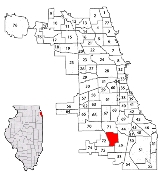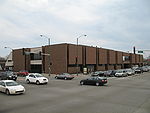
Washington Heights, Chicago
Encyclopedia

Community areas of Chicago
Community areas in Chicago refers to the work of the Social Science Research Committee at University of Chicago which has unofficially divided the City of Chicago into 77 community areas. These areas are well-defined and static...
, is located on the far south side of the city of Chicago, Illinois, loosely bordered in the south by 107th street, the north by 89th street, the west by Beverly Avenue and the East by Eggleston Avenue. It was once a bedroom community of German
Ethnic German
Ethnic Germans historically also ), also collectively referred to as the German diaspora, refers to people who are of German ethnicity. Many are not born in Europe or in the modern-day state of Germany or hold German citizenship...
and Irish
Irish people
The Irish people are an ethnic group who originate in Ireland, an island in northwestern Europe. Ireland has been populated for around 9,000 years , with the Irish people's earliest ancestors recorded having legends of being descended from groups such as the Nemedians, Fomorians, Fir Bolg, Tuatha...
families whose immigration to the Midwestern United States began circa 1880. In the 1970s the demographics changed to primarily African-American, as it still exists today.
Illinois Place Names (Illinois State Historical Society Occasional Publications Number 55, 1989) indicates that the area of Washington Heights historically was also known as Blue Island Ridge, Campbell's Woods, Dummy Junction, and North Blue Island. A Post Office by the name of Washington Heights was established 25 October 1869 and dissolved 6 June 1894. As noted, it is now part of Chicago. It was one of the many small towns and villages that were annexed into the City of Chicago in the late 19th century.
Washington Heights has seen redevelopment in recent years. According to the 1990 and 2000 US census, the number of persons living in the area has decreased by seven percent and the number of vacant housing units increased by 76%. Persons living below the poverty level has remained mostly the same (-17 persons), but the number of families living below the poverty level increased by five percent. Between 1990 and 2000, owner-occupied housing prices increased eight percent to a median value of $91,067 while the median renter-occupied gross rents decreased by three percent.

